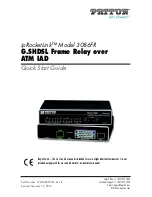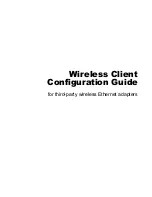
DMD1050 Satellite Modem Board
Theory of Operation
The Baseband Printed Circuit Card also contains the Monitor and Control (M&C) Circuitry
responsible for:
�
Programmable part setup and initialization
�
Continuous control and adjustment of some functions
�
Calibration
�
Monitoring fault status
�
Calculating and displaying measurements
�
Calculations
�
User monitor and control interface including front panel and remote
�
Unit’s configuration and feature set
The M&C System is based on a powerful microprocessor with a large amount of Flash memory.
Several bus architectures are used to interconnect the M&C to all components of the DMD1050.
Communication to the outside world is done via connections to the remote port, terminal port,
Ethernet port, and alarm ports. The M&C runs off software programmed into its Flash memory.
The memory can be reprogrammed via the Ethernet port to facilitate changes in software.
3.2
DMD1050 Functional Block Diagram
Figure 3-4 represents the DMD1050 Functional Blocks. The modem is shown in a typical
application with customer data, Tx/Rx RF equipment and an antenna.
3.2.1 Baseband Processing
The Baseband Processor performs all of the functions required for an IBS/IDR Framing Unit, a
Reed-Solomon Codec. In addition, the Baseband Processing Section provides for transmit clock
selection and rate adaptation as well as a rate adapter and Plesiochronous/Doppler (PD) Buffer in
the receive direction. A multiplexer is also provided for the SCT Clock Source for Loop Timing
Applications. The transmit and receive paths may be configured independently under processor
control.
The DMD1050 supports IBS & IDR compatible framing modes. Since
the modem does not have all supporting interfaces as stipulated by
IESS308/309, it is not 100% compliant. IBS and IDR framing modes are
IMPORTANT
supported in a Closed network Mode.
3.2.2 Tx Baseband Processing
The Tx Data and Clock enters the Baseband Processor, passes through a Rate Adapting FIFO and
enters the Framer Processor. In Closed-Net Mode, the data passes through the framer unaltered.
In IDR & IBS framining enabled, it adds the appropriate framing as defined in IESS-308 and
309. The data is then sent to the Reed-Solomon Encoder.
The Reed-Solomon Encoder, encodes the data into Reed-Solomon Blocks. The blocks are then
interleaved and synchronized to the frame pattern as defined by the selected specification (IESS
308, IESS-309, DVB, etc.). After Reed-Solomon Encoding, the composite data and clock are
applied to the BB Loopback Circuit.
MN-DMD1050
3–4
Revision 9
Содержание Radyne DMD1050
Страница 2: ......
Страница 4: ...This page is intentionally blank...
Страница 58: ...DMD1050 Satellite Modem Board Theory of Operation Notes MN DMD1050 3 36 Revision 9...
Страница 68: ...DMD1050 Satellite Modem Board Rear Panel Interface Notes MN DMD1050 4 10 Revision 9...
Страница 103: ...DMD1050 Satellite Modem Board Web Browser Configuring the PC Figure 7 8 Configuring the PC MN DMD1050 7 13 Revision 9...
Страница 140: ...DMD1050 Satellite Modem Board Product Options Notes MN DMD1050 A 2 Revision 9...
Страница 150: ...DMD1050 Satellite Modem Board TCP IP Ethernet Setup Notes MN DMD1050 C 8 Revision 9...
Страница 174: ...DMD1050 Satellite Modem Board Ethernet Data Interface Notes MN DMD1050 F 12 Revision 9...
















































